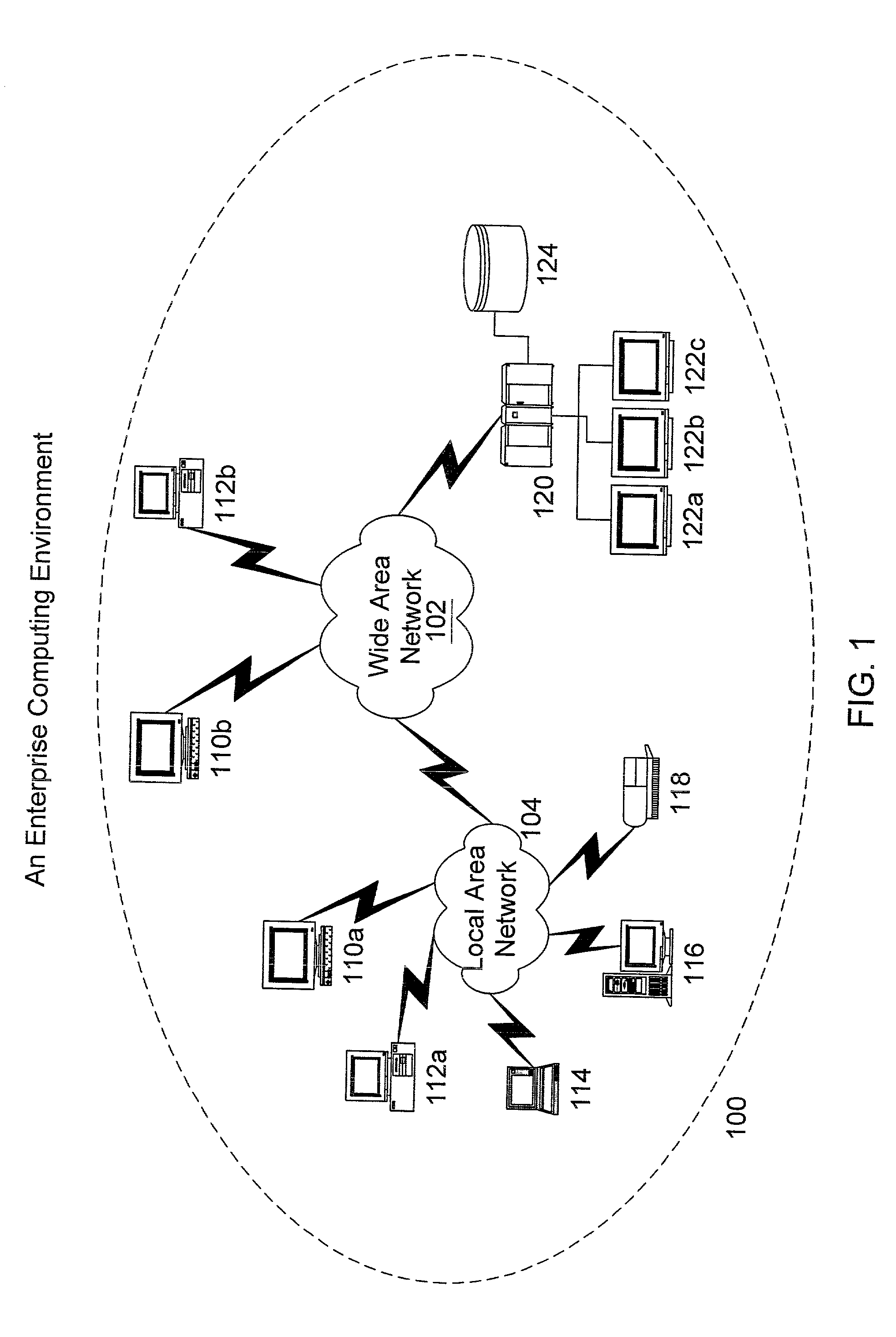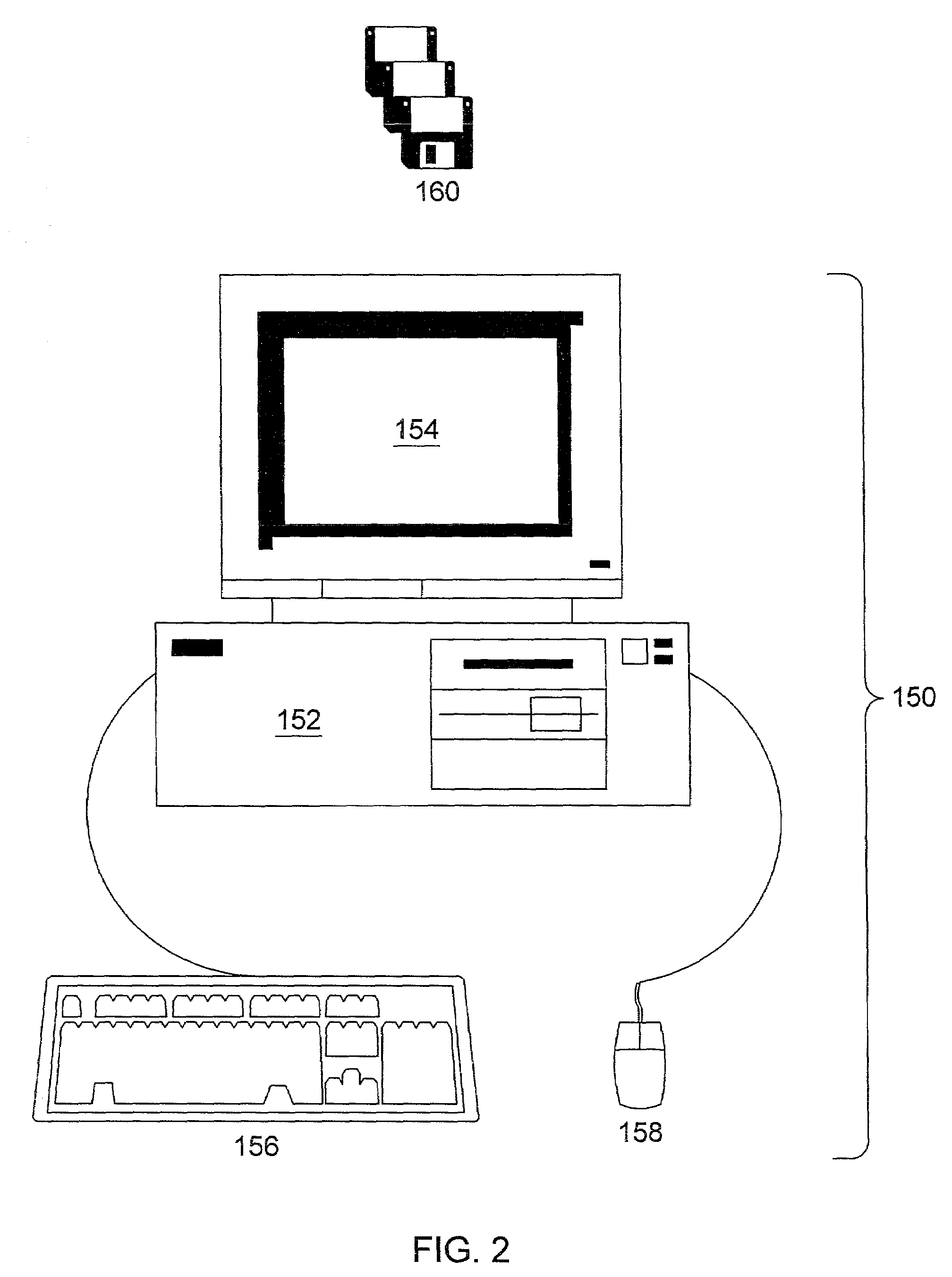System and method for automatic workload characterization
a workload and automatic characterization technology, applied in the field of computer systems and software, can solve the problems of insufficient user time, inability to find workloads and determine which processes belong to which workloads, and inability to accurately describe the relationship between resources and workloads
- Summary
- Abstract
- Description
- Claims
- Application Information
AI Technical Summary
Benefits of technology
Problems solved by technology
Method used
Image
Examples
example 1
[0058]Table 1 (FIG. 8) is a straightforward count of the number entries in a log file of transactions on a web server. The data represents the number of entries in the log file for 90 successive fifteen-minute intervals. For the same time interval, the reported CPU utilization of the two-processor machine is shown in Table 2 (FIG. 9). The correlation coefficient between these two lists is 0.73, and it may be inferred that for each log file entry there was a significant amount of CPU activities. The amount is estimated below.
[0059]This information may be used to construct a model. The model will be an abstraction of one interval, but the above numbers from all the intervals may be used to establish the relationship between the log file entries and CPU usage. This relationship may be estimated using a variant of the formula described below. In this example, CPU utilization and the log file activity have a correlation coefficient of 0.73. It is desirable to distribute CPU utilization b...
example 2
[0105]Table 8 (FIG. 15) shows a list of candidate workloads. Table 8 lists activities, measured by utilization for candidate and aggregated workloads, reads or writes per second for disk, for a twenty-processor machine. Each number in the table is an average over a 15-minute interval. Since it is a 20-processor machine, the maximum possible number is 2000. The original table has 96 rows (covering 24 hours); for space reasons, only the first 20 rows are shown in FIG. 15. FIG. 7 illustrates the normalized activities (utilization and I / O rate), after using the linear transformation (1), of the candidate workloads. There are many pairs of workloads in FIG. 7 that are highly correlated, though others are not correlated. Table 9 (FIG. 16) lists pairs of candidate workloads ordered by the correlation coefficient values from high to low.
[0106]We will aggregate workloads by the following procedure: First, we set a threshold to indicate a significant relationship (correlation). Here, we will ...
PUM
 Login to View More
Login to View More Abstract
Description
Claims
Application Information
 Login to View More
Login to View More - R&D
- Intellectual Property
- Life Sciences
- Materials
- Tech Scout
- Unparalleled Data Quality
- Higher Quality Content
- 60% Fewer Hallucinations
Browse by: Latest US Patents, China's latest patents, Technical Efficacy Thesaurus, Application Domain, Technology Topic, Popular Technical Reports.
© 2025 PatSnap. All rights reserved.Legal|Privacy policy|Modern Slavery Act Transparency Statement|Sitemap|About US| Contact US: help@patsnap.com



